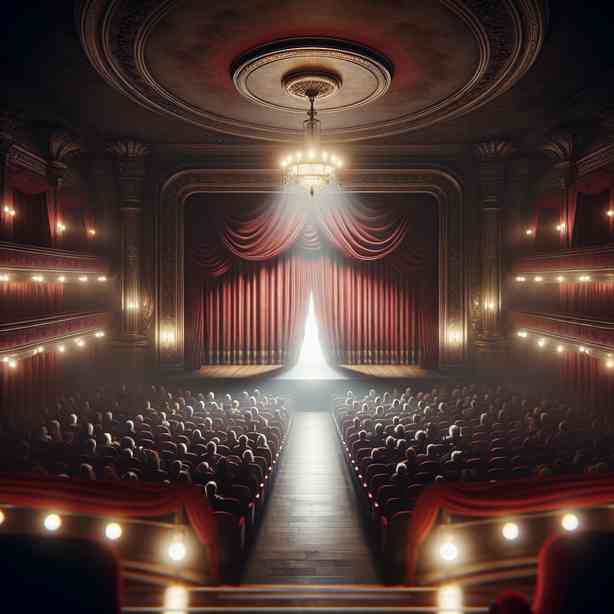
When the curtains open automatically during a theatrical performance or a grand event, it is a memorable moment that not only excites the audience but also marks the beginning of a captivating journey. This moment highlights the intersection of technology, artistry, and crowd engagement in a way that elevates the overall experience. The anticipation builds as the lights dim and the audience settles into their seats, whispering to each other about what is about to unfold.
The opening of the curtains signifies the transition from the mundane world outside the theater to the enchanting realm of performance. Various techniques and technologies have been employed over the years to create this magical moment, from traditional manual pulls to modern automatic systems that provide a seamless experience. The artistry of stage design, combined with the innovative use of technology, sets the stage for creativity to flourish. The automatic curtain-opening feature not only adds an element of surprise but also portrays the sophistication of the production itself.
Much like a movie trailer, the opening of the curtains serves as a preview of what is to come. The audience is drawn into the visual and auditory splendor that lies ahead, igniting their imaginations and heightening their expectations. This moment is crucial in establishing a connection between the performers and the audience, sparking curiosity and intrigue. The anticipation resonates throughout the venue, creating a shared experience that unites people, even if they come from diverse backgrounds.
In contemporary theater, the use of automatic curtains has become increasingly popular due to its ability to save time and enhance efficiency. Automatic systems can be controlled remotely, allowing the stage crew to focus on other critical aspects of the production, such as lighting and sound. This technological advancement provides an extra layer of polish that modern audiences have come to expect. It symbolizes progress and innovation in the performing arts, mirroring the rapid advancements in various sectors of our lives.
Aside from functionality, the aesthetic qualities of automatic curtains are equally impressive. Many productions feature beautifully designed draperies that complement the themes and moods of the performance. The quality of the fabric, the depth of the colors, and the intricate patterns contribute to the overall visual impact of the show. Custom-designed automatic curtains add a layer of sophistication to the stage, enhancing the audience’s emotional experience. When the curtains part, it is more than just a practical action; it becomes a beautifully choreographed moment that incorporates not only the design but the spirit of the performance itself.
Moreover, the role of automated curtain systems transcends mere efficiency; it represents a shift in how we experience performances in the digital age. With the rise of multi-dimensional visual effects and immersive technologies, automatic curtains are often integrated into larger narratives that engage audiences on multiple sensory levels. These systems can be synchronized with lighting changes, sound effects, and even video projections to create a holistic experience that is both stunning and memorable.
The emotional impact of this moment is profound. As the curtains open, the audience may find themselves overwhelmed with excitement, nostalgia, or even serenity, depending on the nature of the performance. It’s a moment that can trigger a range of emotions, from laughter to tears, and it sets the tone for the entire experience. This emotional connection is what makes theater an unparalleled form of art. The shared reactions among those in attendance create a palpable energy that is difficult to replicate in other forms of entertainment.
Culturally, the act of unveiling a performance resonates with traditions around the world. From the iconic proscenium arch in Western theaters to the vibrant Kabuki curtains in Japan, the idea of revealing something hidden has been a significant aspect of storytelling across cultures. This opening moment serves as a reminder of our shared human experience—the yearning for connection, understanding, and emotional resonance. It illustrates the universal language of art and the capacity for stories to transcend time and space.
As we advance in the realm of performance arts, the evolution of curtain technology will undoubtedly continue to play a pivotal role. Innovations in materials and mechanics promise to enhance not only the efficiency of productions but also the artistic expressions they convey. The trajectory of automatic curtains reflects broader trends in the entertainment industry where creativity meets technology, enhancing the storytelling experience.
In closing, the moment when the curtains open automatically is more than just a transitional phase; it is a crucial part of the theater-going experience that encapsulates anticipation, artistry, and emotional depth. Whether one is witnessing a musical, a drama, or a performance art piece, this moment marks the beginning of a shared journey. It encapsulates the magic of live theater, reminding us of the power of storytelling to enchant, provoke, and unite. As we look to the future, it will be exciting to see how technology and artistry continue to evolve, crafting even more astounding experiences for audiences around the world.


